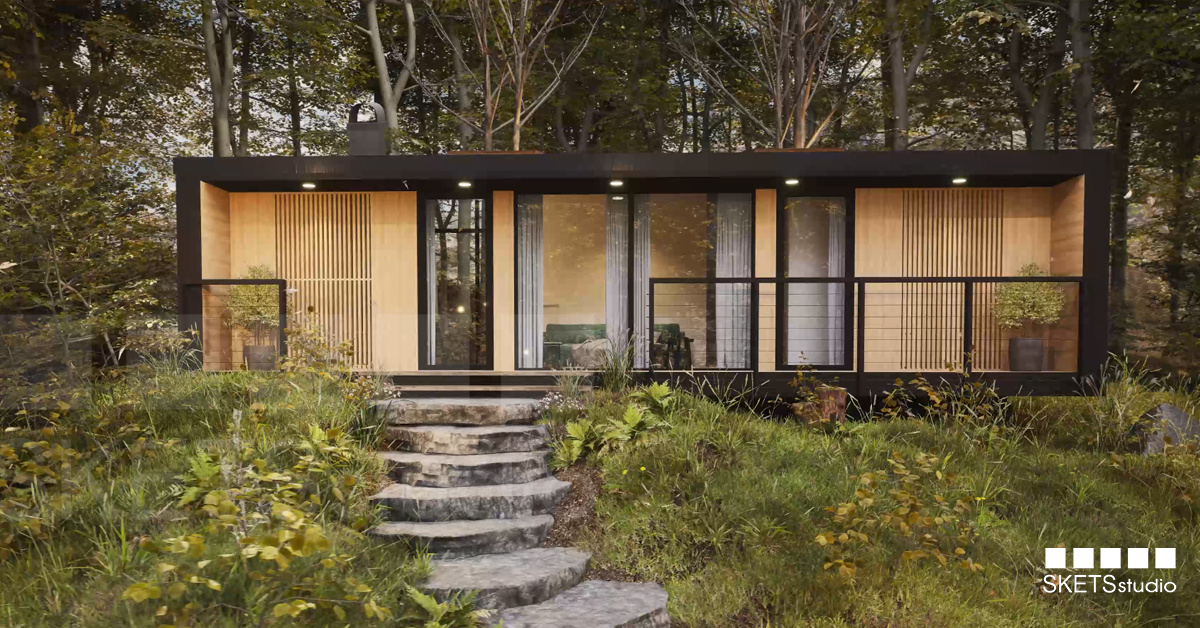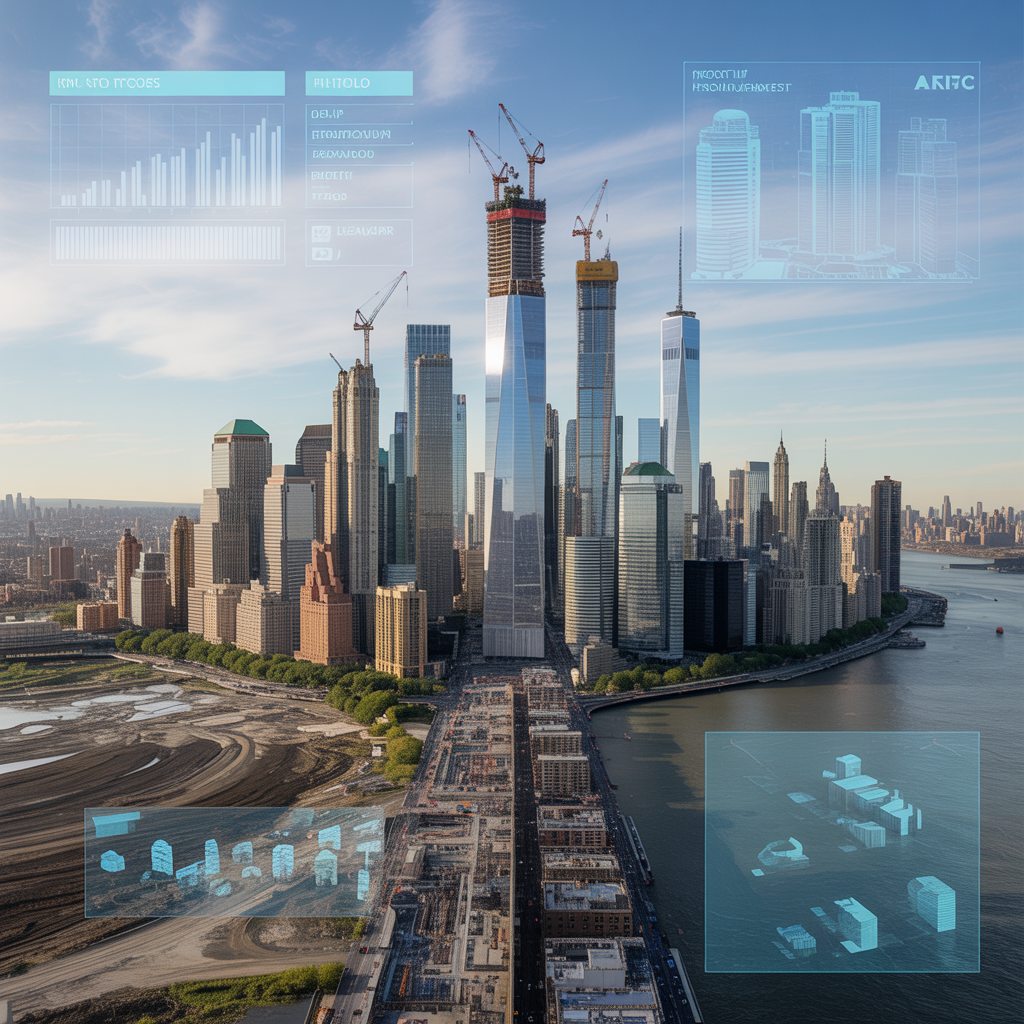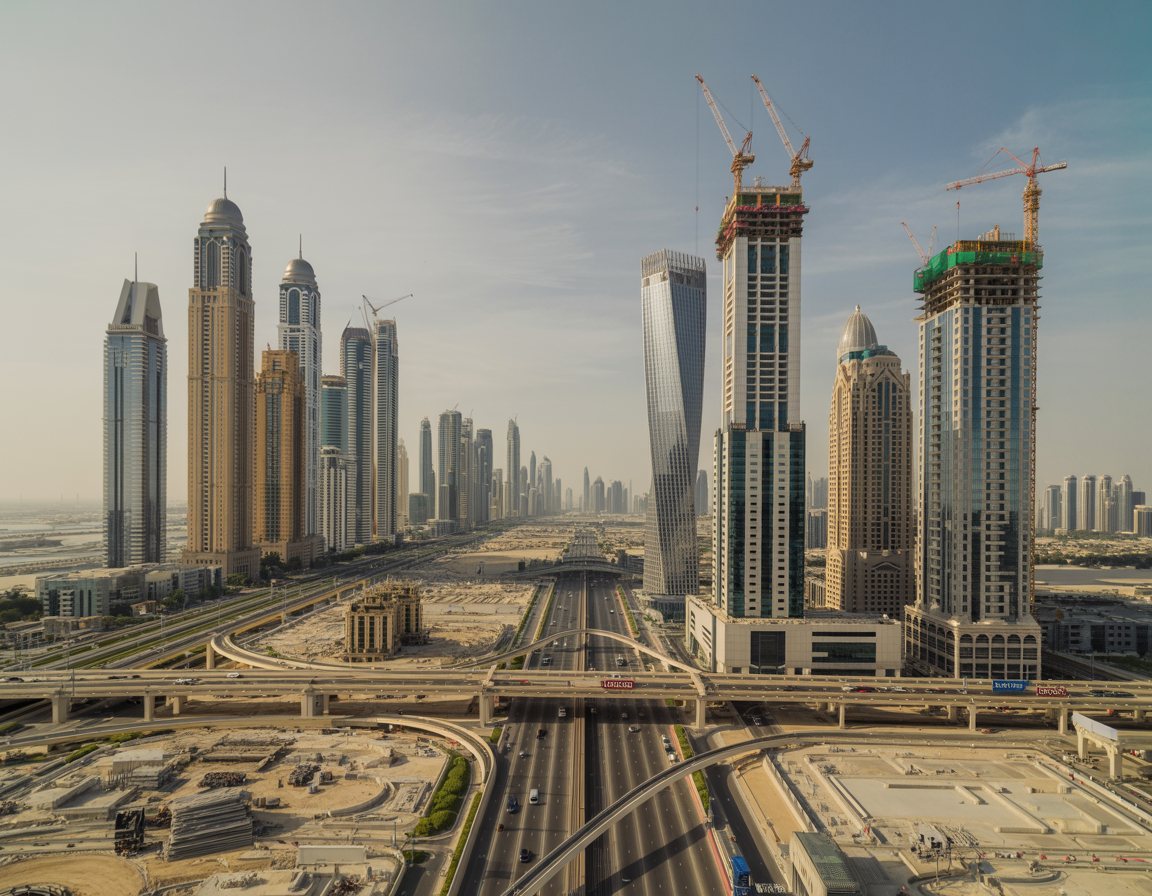
Beyond Blueprints: A Deep-Dive into the Global AEC Surge and Future Trends
The AEC sector is evolving! This transition is driven by widespread adoption of next-gen digital tools. Legacy systems have become obsolete and are no longer adequate to meet the demands of faster, larger, and more complex projects, which accurately explains this surge.
Skylines around the world are once again dotted with cranes, signaling a strong rebound in construction activity post‑pandemic.
The numbers also back this trend, the global construction output is projected to climb from around US $13.3 trillion in 2025 to US $15.2 trillion by 2030. In fact, according to the seminal “Global Construction 2030” report, the U.S., China, and India are expected to account for approximately 60% of this growth.
While the West and Asia are heading towards an unprecedented construction spree, the Middle East is eyeing a complete overhaul, reshaping the geography with ambitious projects worth billions of dollars, such as ‘The NEOM’ and ‘The Line’.
Data shows that Middle East Construction Market touched $337.43 billion in revenue in 2024. Moreover, the regional market is expected to hit about $361.60 billion by 2025, showcasing massive unexplored opportunities.
But these figures barely scratch the surface. In this blog, we unpack the most influential dynamics fueling this AEC revolution.

From Policy Pushes to Private Capital: Main Factors Driving the Boom
Did you know that around 140 million individuals are homeless, and one in four people live in substandard conditions? By 2030, an estimated 3 Billion people, around 40% of the world’s population will lack access to adequate housing, generating a need for about 96,000 new homes daily.
To address these roadblocks, many governments are pushing for massive infrastructure investments, deploying infrastructure policies as economic levers.
In the U.S., for instance, the Infrastructure Investment and Jobs Act (IIJA), a landmark US $1.2 trillion initiative, has injected roughly US $560 billion into new engineering and construction projects, including roads, bridges, utilities, and disaster-resilient infrastructure, with implementation continuing through 2026. This policy action aligns with the urgency of the global housing crisis.
Not just this, Indonesia’s ‘Nusantara’ has entered a new phase of momentum. As of May 2025, over US $4 billion in private capital has been channeled into the project, with a backing from 42 firms.
From Ruin to Resilience: Natural Calamities as Catalysts for Smarter Infrastructure
Large-scale natural disasters are also fuelling construction momentum.
Wildfires are known to wreak havoc on buildings, affecting both commercial and residential sectors, and the recent California wildfires are a testament to this. According to Statista, the United States witnessed close to 65000 wildfires in 2024 alone.
The destruction in the aftermath of these calamities opens massive construction demand, allowing AEC professionals to leverage the trend without getting overwhelmed by the rapid pace of technological transformation.
How AI, Automation, and Data Are Transforming Job Sites
Automation was born to support human efforts and today, it’s revolutionizing construction job sites. Here’s how AEC firms are building smarter, safer, and faster
1. Predictive Site Management: AI systems now forecast delays beforehand by analyzing real-time inputs like weather forecasts, labor availability, and equipment utilization, allowing teams to adjust proactively.
2. Robots and Autonomous Machinery: Construction robots—ranging from AI-driven drywallers to autonomous excavators—are entering mainstream project workflows.
3. Site Safety & Hazard Prevention: Safety-focused AI platforms, analyze worker behavior and site conditions, detecting missing PPE or unsafe actions.

Core Sectors Driving Construction’s Next Chapter
Residential
The global construction surge is fueled primarily by an urgent housing shortage. Soaring urban populations and declining affordability have prompted governments and private developers to pour capital into residential projects—from mass housing initiatives to private townships. Off-site techniques like precast concrete, prefabrication, and modular systems are rapidly scaling, enabling faster, smarter, and more cost-efficient delivery of living spaces.
Hospitality
Hospitality construction has gained momentum as urban expansion continues and tourism rebounds. Developers are now integrating hotels, co-living units, and serviced apartments within mixed-use developments like smart cities and transit-oriented hubs. The drive is for rapid, localized builds that can support dynamic demand. Prefab is making inroads here too: modular techniques are increasingly used for hotel rooms and apartment units, delivering faster cycle times and consistent quality.
Interiors
With accelerated project timelines, interior fitouts have become integral from day one—no longer just a finishing touch. These phases are now planned alongside structural framing to ensure on-time occupancy. Prefabricated interior modules, sustainable finishes, and digitally coordinated planning help interiors land on schedule, customize efficiently, and remain cost-effective.
(Click here to explore our Interior Design Documentation Services)
How SKETS Studio aligns with Market Momentum and AEC Boom
With a global footprint spanning 2,500+ large-scale iconic projects and a team of 850+ skilled professionals, SKETS Studio is uniquely positioned to support the accelerating pace of the global AEC market. Established in 2005, SKETS has evolved into an integrated one-stop solution provider for firms across the vast AEC landscape.
As giga-projects, rapid urban expansion, and disaster recovery rebuilds drive demand, SKETS supports clients with precision and adaptability. Whether it’s fully coordinated BIM execution, real-time twin models, or compliance, SKETS delivers speed and accuracy at scale.


